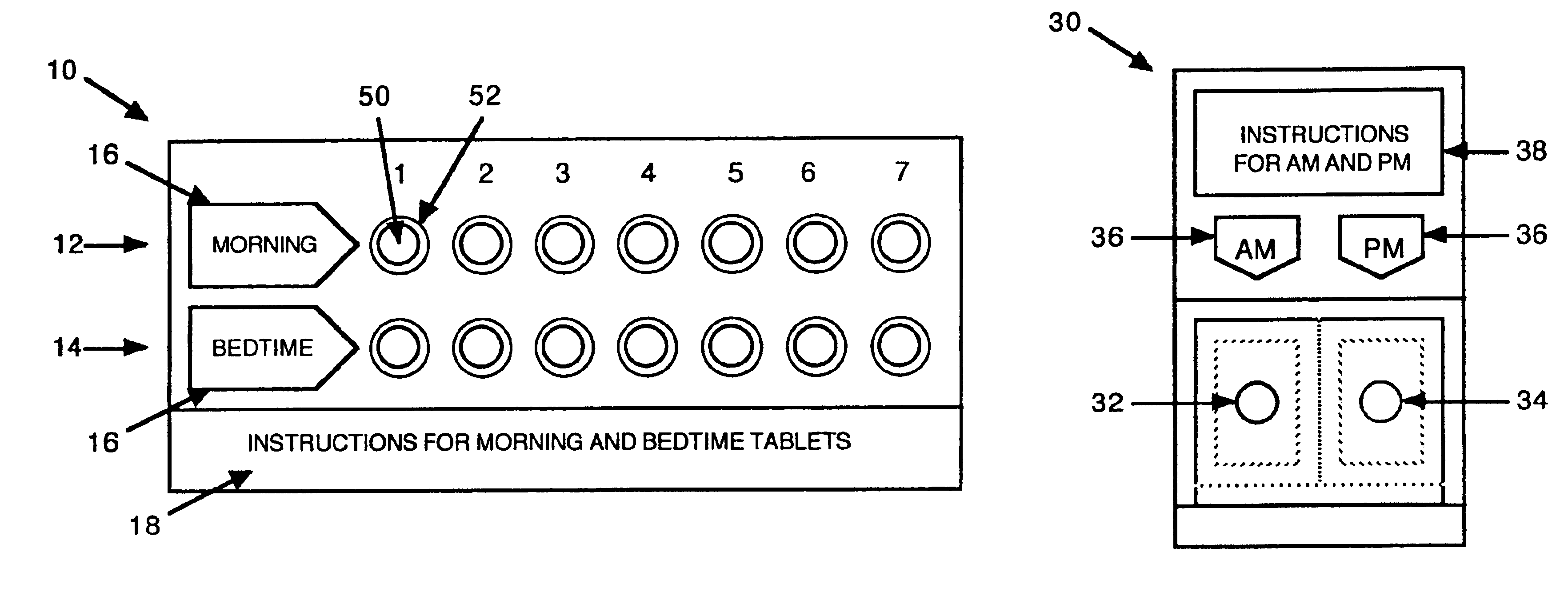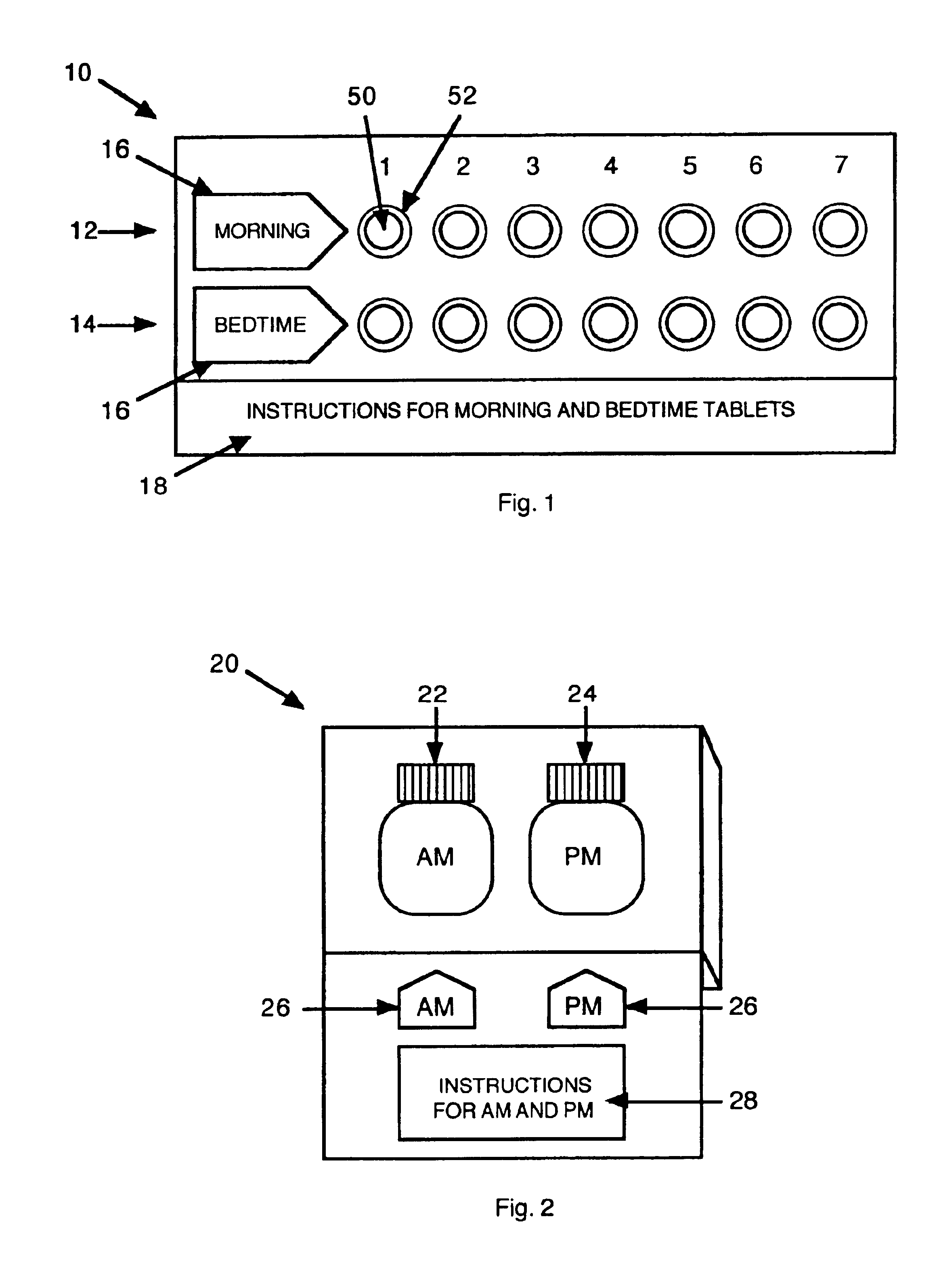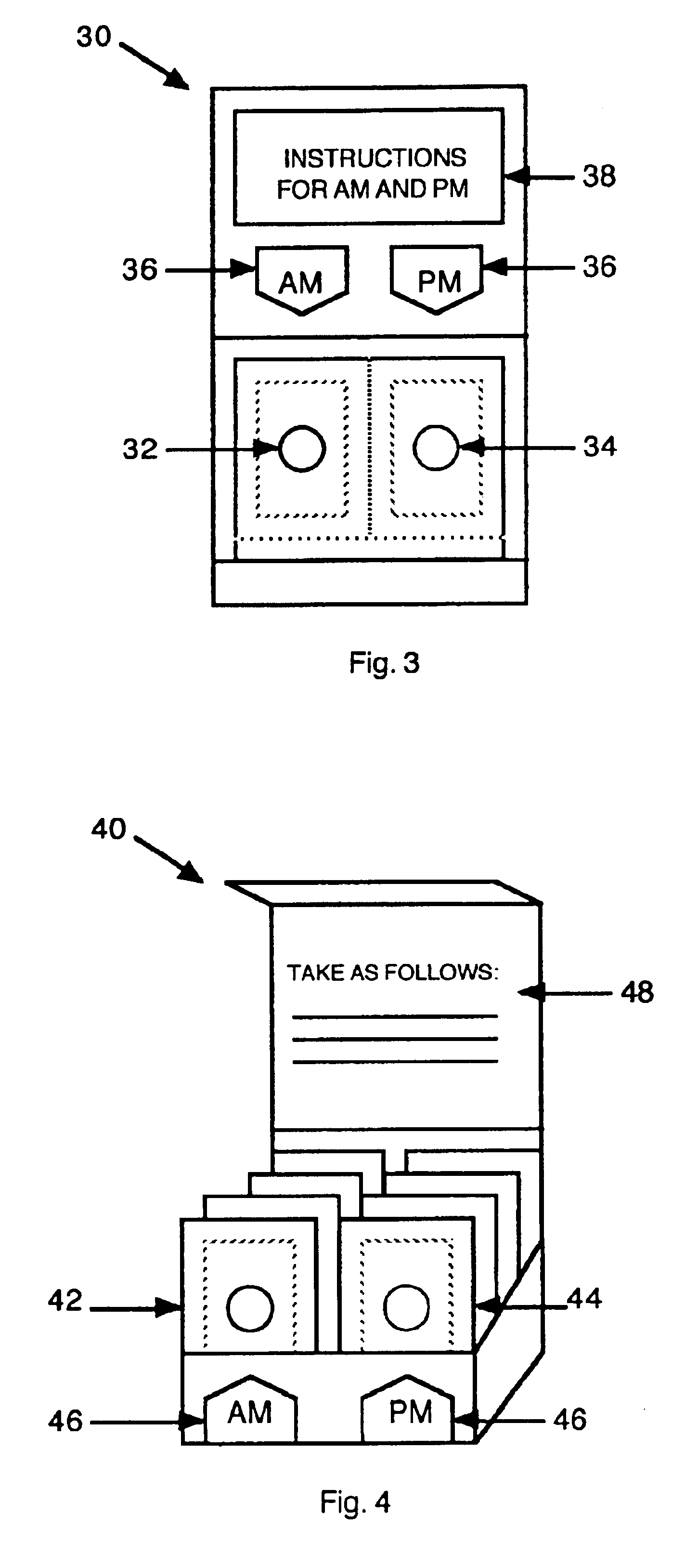Antihistamine/decongestant regimens for treating rhinitis
- Summary
- Abstract
- Description
- Claims
- Application Information
AI Technical Summary
Benefits of technology
Problems solved by technology
Method used
Image
Examples
example 1
The following regimen is suggested for an individual who is considered to be moderately susceptible to the stimulating side-effects of decongestants:Daytime dosage: 90 mg pseudoephedrine hydrochloride in 12 hour time-release formulation, and 5 mg loratidine (to be taken in the morning), andBedtime dosage: 60 mg pseudoephedrine hydrochloride in 12 hour time-release formulation, and 5 mg loratidine (to be taken at bedtime).
This regimen employs the stimulating decongestant pseudoephedrine hydrochloride and the non-sedating antihistamine loratidine. The conventional 12-hour dosing of 120 mg of pseudoephedrine has been illustrated by the aforementioned examples of single dosage unit antihistamine-decongestant combinations. As noted, stimulatory side effects are known to occur with conventional dosing, and some individuals are more susceptible to side effects than others. This regimen utilizes a morning dosing to 90 mg of pseudoephedrine, instead of the conventional 120 mg, and a bedtime ...
example 2
The following regimen is considered appropriate for an individual who is moderately susceptible to the stimulating side-effects of decongestants, and particularly susceptible to insomnia from decongestants at night:Daytime dosage: 90 mg pseudoephedrine hydrochloride in 12 hour time-release formulation (to be taken in the morning), andNighttime dosage: 30 mg pseudoephedrine hydrochloride in 12 hour time-release formulation, and 4 mg of chlorpheniramine (to be taken at bedtime).
In this example, the total 24 hour dose of 120 mg of pseudoephedrine is one-half that of conventional dosing. By reducing the morning dose of pseudoephedrine to 90 mg, instead of the conventional 120 mg, and the bedtime dose to 30 mg, instead of the conventional 120 mg, a balance between therapeutic and side effects might be achieved in an individual susceptible to stimulatory side-effects, particularly insomnia. The potential for nighttime stimulation from pseudoephedrine is further diminished by the inclusion...
example 3
60 mg pseudoephedrine sulfate in a 12-hour time release formulation, and 60 mg of fexofenadine (to be taken in the morning), and 60 mg of fexofenadine (to be taken in the evening).
For an individual known to be prone to insomnia with decongestants, limitation of pseudophedrine dosing to the day, in this example, avoids stimulation and insomnia at night. Dosing of one half of the conventional daytime dosage of 120 mg of pseudoephedrine might suit an individual who is susceptible to its side effects but able to tolerate a decreased dosage in order to gain therapeutic benefit. Use of the non-sedating antihistamine fexofenadine avoids daytime sedation compared to sedating antihistamine. The 12-hour duration of antihistaminic activity of fexofenadine requires daytime dosing to achieve an effective daytime combination of antihistamine and decongestant. Binding of fexofenadine to the histamine receptors in the morning is expected with its bedtime dosing.
In addition to antihistamines and dec...
PUM
 Login to View More
Login to View More Abstract
Description
Claims
Application Information
 Login to View More
Login to View More - R&D
- Intellectual Property
- Life Sciences
- Materials
- Tech Scout
- Unparalleled Data Quality
- Higher Quality Content
- 60% Fewer Hallucinations
Browse by: Latest US Patents, China's latest patents, Technical Efficacy Thesaurus, Application Domain, Technology Topic, Popular Technical Reports.
© 2025 PatSnap. All rights reserved.Legal|Privacy policy|Modern Slavery Act Transparency Statement|Sitemap|About US| Contact US: help@patsnap.com



